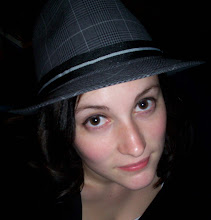The Girl who Kicked the Hornets’ Nest is book three in the Millennium Trilogy. In the book world, it’s been a phenomenon, creeping up towards Twilight/Harry Potter/Da Vinci Code territory, but with a much more interesting back story. Author Stieg Larsson wrote the three books in the trilogy but died of a heart attack at age fifty, just before the books were published and adored both in his native Sweden and internationally. There are rumours that Larsson, an investigative journalist like his male protagonist Mikael Blomkvist, was actually killed off due to his profession. I’m not sure whether this is true—though he almost certainly received death threats—or if it is a marketing ploy. Either way, he died young, and it’s sad. Because the Millennium Trilogy is a downright excellent series, and Larsson himself comes across as a genuinely bang-up guy.
It’s hard to review the last book in a series without in some way spoiling the contents of the others. But once you’ve read the blurb, you know two things: one, the main characters live through the first books; and two, they’re pissed. Book one, The Girl with the Dragon Tattoo, felt in some ways like a locked-room Agatha Christie book: there was a crime on an island with no viable escape routes. Mikael Blomkvist is summoned, in the mysterious way that non-police detectives often are, to help solve this crime, now decades old. He’s happy to lie low after being jailed for libel after breaking an uncorroborated story, so he accepts the challenge. (Incidentally, Swedish prisons come across as luxury spa retreats.) Meanwhile, Lisbeth Salander, the most unlikely and therefore most fabulous heroine in the history of fiction, is just trying to survive in a world that conspires against her. Twenty-five years old, tattooed, pierced, skinny, and able to pass for a teenager, she hates everyone and with good reason. After having her mental state questioned all her life, she is given a guardian who uses his position to abuse her in a truly horrifying scene that literally made me break out into a sweat on the tram. Lisbeth is not the kind of person who lets such things go by unpunished, luckily, and her story, which becomes linked to Blomkvist’s, makes for fascinating reading. Book two, The Girl who Played with Fire, follows the two of them as they go their separate ways—Lisbeth to search out and avenge her childhood wrongs, and Blomkvist back to what he does best, exposing bad guys. The death of two of Blomkvist’s colleagues bring them together yet again as Salander is accused of all number of crimes, not least Looking Scary and Being Uncommunicative.
Knowing that the characters survive each book isn’t the same as knowing what condition they will be by the next one. Book three begins with Lisbeth in hospital, fiercely unwell and accused of some more crimes and barely metres from the man who is the reason for most of the crimes perpetrated against her. Blomkvist is out and about trying with all he has to get her vindicated and to expose the enormity of the situation that led to Lisbeth’s current state. This is not light reading, and while I’m generally a fast reader it’s because I skip through sentences and rush to the end of the page. The Girl who Kicked the Hornets’ Nest isn’t the kind of book you can do that in, so laden is it with Swedish politics from decades ago and countless new characters who are all equally important. While this may make it seem like hard work, it’s still an exciting thriller. One of Larsson’s best talents is to spend the first two-thirds of a book revealing the atrocities of humanity and then, in the final third, letting all the bad guys get their comeuppance.
But these aren’t simple spy thrillers. The most important part of these books is said by a character in Hornets: “When it comes down to it, this story is not primarily about spies and secret government agencies; it’s about violence against women, and the men who enable it.” Lisbeth, along with her mother and many other females in the books—as well as in reality—are treated appallingly. If it takes a bestselling thriller to bring facts like these to light, so be it.
This may be the one flaw in the books—that some of the women suffer, others are brave and powerful, but I can’t recall any of them being a villain. Larsson isn’t denying the existence of them as such; they’re just not here, for these occasions.
I know this is a painfully long review—worse still, it’s my third draft—but I’m putting the effort in because they’re books worth reading. They’re not always pleasant, and sometimes very complex, but they are undoubtedly rewarding. With Larsson’s death, the trilogy is all we have of him. The third book ties up nicely, apart from one very very small loose end, which he could perhaps have followed through with in another story. We won’t know.
Sweden is ahead of us in making movies of the series (with all the characters looking wrong, ugh) but there are rumours going around—just rumours—that the person grabbing at the American film rights is young Mr Quentin Tarantino himself, purveyor of girl-power movies (Death Proof, anyone?) I believe he’ll do it justice, but you may as well grab a copy now and read it for yourself before the movie comes out, no?


No comments:
Post a Comment
Opinions, opinions! Come one, come all.